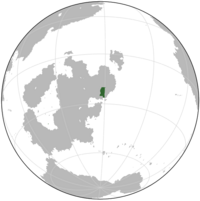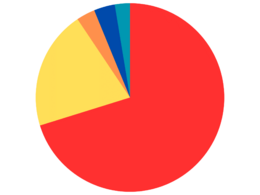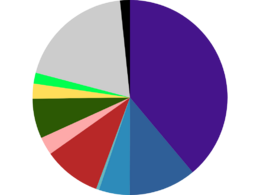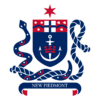New Piedmont: Difference between revisions
No edit summary |
|||
| Line 167: | Line 167: | ||
=Government and Politics= | =Government and Politics= | ||
New Piedmont is a constitutional monarchy, a parliamentary democracy and a federation. The country has a written and mostly unchanged constitution alongside a stable liberal democratic political system since [[Piedmontese Confederation|Confederation]] in 1919. It is one of the world's oldest federations, in which power is divided between the federal and commonwealth governments. The New Piedmont government includes heavy influences from both the political systems of [[Fluvannia]] (constitutional monarchy, {{wp|Bicameralism|bicameralism}}, and federalism) and [[Gagium]] (written constitution and greater investment of powers into the {{wp|Head of government|head of government}}). This has resulted in a strong parliamentary government. | |||
Crown Prince | |||
==Commonwealths== | ==Commonwealths== | ||
Revision as of 03:10, 20 February 2024
Viceroyalty of New Piedmont 3 official names
| |||||||
|---|---|---|---|---|---|---|---|
| Anthem: Hail the Red Flag! | |||||||
 | |||||||
| Capital | New Oshkosh | ||||||
| Largest city | Williamstown | ||||||
| Official languages | Colonial Burgwieser Fluvan Piedmontese | ||||||
| Recognised national languages | Autonomous Regional Languages Vinn Louisiana Creole Umitaku Yudipraha Nonautonomous Regional Languages Semharan An-Naas Yawathan Qalawena Odehen | ||||||
| Ethnic groups (2022) |
| ||||||
| Religion (2020) |
| ||||||
| Demonym(s) | New Piedmontese | ||||||
| Government | Federal constitutional parliamentary monarchy | ||||||
• Viceroy | Paul Bettle | ||||||
| Jakob Fumori | |||||||
| Olaf Biskel | |||||||
| Sabine Esser | |||||||
| Legislature | Union Parliament | ||||||
| Senate | |||||||
| House of Representatives | |||||||
| Independence from Fluvannia | |||||||
| Summer 1801 | |||||||
| 1 December 1919 | |||||||
• Independence from Fluvannia | 29 August 1953 | ||||||
| 1985 | |||||||
| Area | |||||||
• Total | 182,056 km2 (70,292 sq mi) | ||||||
| Population | |||||||
• 2022 estimate | 7,850,000 | ||||||
• 2013 census | 7,841,110 | ||||||
• Density | 43.07/km2 (111.6/sq mi) | ||||||
| GDP (nominal) | 2022 estimate | ||||||
• Total | |||||||
• Per capita | |||||||
| Gini (2022) | low | ||||||
| HDI (2022) | very high | ||||||
| Currency | Galian Shekel ($) (NGS) | ||||||
| Date format | mm-dd-yyyy | ||||||
| Driving side | right | ||||||
| Calling code | +911 | ||||||
| ISO 3166 code | AL | ||||||
| Internet TLD | .np | ||||||
New Piedmont, officially the Viceroyalty of New Piedmont, is a country in Northern Galia, situated along the southeast coast of the Yawatha region. New Piedmont is bordered by Temelaeli to the north, Iodaia to the east, and Janolia and Louisiana to the west. To the south lies the Naossian Gulf, and the country shares maritime borders with Naossia. The country's capital is the inland city of Williamstown, but the largest city is the port of New Oshkosh. Other major cities include Kexem, Walterstad, and Jacksonville.
The areas which are now New Piedmont were the last large habitable swaths of land to be settled by foreign colonies in Galia. In 1642, the Alaoyian explorer Abel Tasmanen became the first non-native to sight and record New Piedmont. Colonists, primarily Burgwiesers from Fluvannia, began arriving in the late 1700s and early 1800s, often pushing native populations out. Other Fluvan colonists, Gagians, and Iodaians arrived during this period. New Piedmont was confederated in 1919 and became fully independent in 1953, becoming an independent nation. New Piedmont escaped direct damage to its territory in the Second Great War, but did suffer from missile and bomber strikes during the Third Great War. After the Third Great War, New Piedmont partitioned Semhara with Iodaia and Louisiana. In contrast to its neighbors, New Piedmont has fully integrated much of its Semharan territory.
Today, the majority of New Piedmont's population is of Fluvannian descent, with native Galians being the largest minority, followed by Gagians and Jewish people. This ethnic and lingual heritage has made New Piedmont one of the most diverse countries on the planet, with twelve languages having more than 100,000 native speakers in New Piedmont, with seven of them having some official status in the country. The largest native language is Burgwieser, but Fluvan is understood by most people and in urban areas, serving as a common language for most of the country. A unique aspect of the Piedmontese dialect is the unique alphabet adopted in 1883. The alphabet is a simplified one of standard Fluvan and is entirely phonetic.
New Piedmont is a democratic and developed country with an advanced high-income economy. While its economy is the eighth largest in the region, its GDP per capita is third. A founding member of the Global Community, New Piedmont was the third member to join the North Galian Union and is one of three Shekel States, alongside Iodaia and Louisiana, and the Trans-Galian Partnership. It is also a member of numerous other international institutions, including the Galian Entente. New Piedmont has a unique cultural heritage, large tourism industry, and prominent shipping sector. The country's rich historical legacy is reflected in part by its many heritage sites and high diversity.
Name
History
Geography
Government and Politics
New Piedmont is a constitutional monarchy, a parliamentary democracy and a federation. The country has a written and mostly unchanged constitution alongside a stable liberal democratic political system since Confederation in 1919. It is one of the world's oldest federations, in which power is divided between the federal and commonwealth governments. The New Piedmont government includes heavy influences from both the political systems of Fluvannia (constitutional monarchy, bicameralism, and federalism) and Gagium (written constitution and greater investment of powers into the head of government). This has resulted in a strong parliamentary government.
Crown Prince
Commonwealths
Foreign Relations
Military
Human Rights
Economy
Demographics
Main Article: Demographics of New Piedmont
Language
New Piedmont has three national languages: the largest is the colonial dialect of Burgwieser (spoken natively by 31.6% of the population in 2013) in the central parts of the country; Fluvan (16.15%) in the south; and Piedmontese (11.8%) spoken in the southwest. In addition to the three primary languages there are four regional languages with special status: Vinn (6.34%); Louisiana Creole (4.0%); Umitaku (3.61%); and Yudipraha (1.7%). All laws and regulations must be published in three national languages and, if over a certain portion of the population (varying by context) speaks the recognized regional language the government must communicate and provide services in that language. The federal government is obliged to communicate in the official languages, and in the federal parliament simultaneous translation is provided from and into all three national languages automatically and for all four recognized regional languages on a case by case basis.
In addition, 24.8% of the population does not speak one of the seven languages with official status. These five languages do not have special status but have large numbers of speakers (over 0.5%): Semharan (10.1%); An-Naas (4.0%); Yawathan (3.3%); Qalawena (3.3%); and Odehen (0.8%). The government is not required to provide services in these languages.
Aside from the official forms of the respective languages, each language has its own variety of dialects and accents. The role played by dialects varies dramatically. For example, Umitaku dialects vary wildly city to city, including in spoken form, and Umitaku from Fluvannia report difficulties communicating with their Piedmontese counterparts. In contrast, Piedmontese dialects are all relatively similar with few written differences and their dialectal differences have almost disappeared. In still other languages, such as Colonial Burgwieser, the dialectal forms and standard forms are used interchangeably, with more casual dialects being used in family settings and casual conversation and more standarized forms used in business and formal communications.
The principal official languages have key difference to their colonial counterparts. Chief among these are the unique alphabet of New Piedmontese Fluvan, which uses an entirely phonetic alphabet. Other examples including differing key terms and the development of creoles (such as Piedmontese deriving with Burgwieser). As with dialectal differences, these differences range from near perfect intelligibility between the Fluvannian and New Piedmontese speakers of Fluvan to massive and sometimes mutually unintelligible dialectal differences with Umitakus.
Learning one of the other national languages is compulsory for all New Piedmontese pupils, with many citizens being at least partially bilingual. Because the capital lies in the Fluvan-speaking part of the country and the greater role Fluvan plays in world affairs, the most common language learned in New Piedmont is Fluvan. While the New Piedmontese dialect uses its own alphabet, schools are required to teach one of the two more common scripts. The preferred standard in New Piedmont is Furbish script.
Race, Nationality, and Ethnicity
New Piedmont has a racially and ethnically diverse populaion. At the federal leve, race and ethnicity have been categorized separately. Ethnicities are further divided into "national groups", categorizing specific ethnicities which are related to each other under a nationality, which is considered a tier above ethnicity and a tier below race. The New Piedmontese census recognizes five racial categories (White, North Galian, East Galian, Umitaku, and Other/Unknown). Nationality groups lie a tier below race and there are six (Sexish Fluvannian, Galian Native, Gagian, Umitaku, Jewish, and Other). Broader notions of ethnicity are recognized, with a total of twelve (some sources say thirteen) ethnicities with over 1% of the national population (roughly 78,500 people).
Race

The largest racial category is White, which makes up 70.2% of the population and consists of Sexish Fluvannians (in turn consisting of Vinns, Fluvans, and Burgwiesers) and Gagians (which consists of Louisianians, Gagians, and Marchan). Whites are the majority in the south and southwest of the country, with Gagians more common in the west and Sexish Fluvannians in the south and east.
Umitaku make up 3.6% of the population and primarily live in southern coastal cities. The most isolated group, they have no close relations in New Piedmont and are primarily descended from Fluvannian traders.
East Galians (consisting of Semharans, Janolians, and Temelaeli) make up 17.3% of the population. Galian Jewish (which consists of Piedmontese Jews and Iodaian Jews) are considered a separate nationality from the East Galians but the same general race and make up an additional 3.1% of the population for total of 20.4% of the population.
Both groups are related to North Galians (consisting of Yawathans and various other groups) who make up 3.2% of the population. These groups are primarily concentrated in the north of the country, with Jews and North Galians especially towards the east, but large minorities are present in every major city in New Piedmont.
The final category is "Other/Unknown" which makes up 2.6% of the country's population. The vast majority of this group are Alannans who immigrated from Alanna, but this category is not recognized by government of New Piedmont. Efforts to recognize this group are ongoing, but have not made progress among the New Piedmontese government or census officials
Nationality and Ethnicity

The largest nationality are Sexish Fluvannians, who make up 64.0% of the population and are considered as belonging to the White group. The constituent parts of this nationality are Burgwiesers (40.5%), Fluvans (14.8%), and Vinns (8.7%). The second largest nationality are Galian Natives, who make up 20.5% of the population, primarily consisting of Semharans (10.1%), Janolians (4.0%), Yawathans (3.2%), and Temelaeli (3.2%). The Galian Native group is split between East Galian and North Galian racial groups. These two nationalities make up the vast majority of New Piedmontese people.
In addition, Gagians make up 6.2% and are primarily made up of Louisianians (4.1%), Gagians (2.0-2.1%), and possibly Marchan (0.1%), though the Marchan population is extrapolated and predicted, rather than accurately measured. They are usually considered members of the White racial group.

Jews make up 3.1% of the population and are made up of Piedmontese Jews (2.0%) and Iodaian Jews (1.1%). They are members of the East Galian group.
The Umitaku make up their own nationality group, though some have advocated for the Umitaku to be considered a part of the Sexish Fluvannians due to their close histories together. Regardless, the Umitaku group makes up 3.6% of the population.
The smallest group is the "Other", which primarily consists of Alannan immigrants and their descendants and make up 2.6%.
Religion
The New Piedmontese Constitution guarantees freedom of religion, forbids the establishment of a state religion, and forbids discrimination on religious grounds. Religious practice is widespread and highly diverse, with eight faiths having over 1.5% of the population describing themselves as adhering to that faith. New Piedmont is, on average, more religious than other wealthy Nordic nations. Over 80% of New Piedmontese people believe in a higher power, engages in religious practices such as prayer, and consider themselves spiritual in some form. The country has a large Christian population, with some form of Christianity being the religion of 55.65% of the country's population.
A 2022 study found that 31% of New Piedmontese reported attending some form of religious sermon or ceremony weekly or nearly weekly. Religious practice varies signifigantly by region and faith. In general, southerners tend to attend religious ceremonies with lower frequency and religion plays less of a public role in the southern portions of New Piedmont. In contrast, northern parts of the country tend to be more religious in general, especially in rural areas. A similar trend is found along religious lines, with Christians, Jews, and Buddhists tend to be less devout and are less likely to engage in religious ceremonies than Muslims and Polytheists do. After Christianity, the largest religion is some form of Polytheism at 12.55%. Islam is the faith of choice for 6.6% of people, Judaism for 2.5%, and Buddhism for 1.8%. Irreligious people make up 19.26% of the population. Religious belief and interest has remained relatively stable in recent years; organizational participation, in contrast, has decreased, especially among Christians.
Other faiths, primarily Prophetism and New Age movements, make up 1.64% of the population.
Citizenship and Immigration
Citizenship
New Piedmont has a tiered citizenship structure, with three tiers; full citizenship, partial citizenship, and permanent resident.
Full citizenship is primarily granted at birth, through application by permanent residents (who must be in good standing and have lived in New Piedmont for ten years) and partial citizens (who must be in good standing and have lived in New Piedmont as a partial citizen for two years), or by military or other national service by partial citizens and permanent residents. Full citizenship by birth is granted to children born to New Piedmontese parents, even those who live abroad, and children born to partial citizens whose primarily place of residence is New Piedmont, even if the child was born abroad. Full citizenship is marked by the right to vote in all elections and the right to run for office at any level. In addition, full citizens can be drafted and get preference in applications to national universities and for government jobs.
Partial citizenship is granted through immigration, when citizens of certain "preferred countries" immigrate to New Piedmont and live in New Piedmont for one year with an intent to remain. Preferred countries include Fluvannia, Gagium, The Furbish Islands, Greater Niagara, the Antarctic Circle States, and other North Galian Union member states. It is not granted by birth. Partial citizens can vote in local and (in some commonwealths) commonwealth elections, but not federal ones. Partial citizens cannot be conscripted though they can join the military on equal terms with full citizens. Partial citizens can receive government benefits and can apply to national universities, though full citizens will get priority. In addition, some government occupations are reserved for full citizens. Partial citizens can become full citizens through military service, marrying a full citizen, or by having lived in New Piedmont for two years as a partial citizen. The child of a partial citizen is always a full citizen.
Permanent residency is granted to those from countries which are not preferred. It is granted to temporary workers who have lived legally in New Piedmont for two years and who have an intent to remain or automatically to citizens of preferred countries. Permanent residents cannot vote, can not become officers on the military, or apply to national universities. In addition, their children only become full citizens if born in New Piedmont while the permanent resident parent primarily resides in New Piedmont. Permanent residency can become full citizenship after eight years.
In addition, certain areas of New Piedmont, primarily those of former Semhara, are under martial law and thus have restricted voting rights. This system has been categorized as racist and discriminatory.
Immigration
As of 2022, New Piedmont has 7,841,110 inhabitants, of whom about 478,307 are resident foreigners. These resident foreigners now make up approximately 6.1% of the population. These figures do not include people of foreign descent, as those who acquire citizenship are included as New Piedmontese, rather than being of foreign descent. In 2022, almost 11,000 resident of foreign origin acquired New Piedmontese citizenship, with slightly more males than females gaining citizneship.
The vast majority of immigrants tend to be from Fluvannia, Iodaia, Louisiana, Janolia, and Temelaeli. The cause and origin of immigration varies by country. Immigrants from Fluvannia and Iodaia tend to be coming for the lower cost of living and growing economy of New Piedmont. Iodaians in particular tend to be composed of retired pensions living in major cities in the southeast of New Piedmont, close to the Iodaian border. Meanwhile, those from Fluvannia tend to be educated workers coming to New Piedmont for new jobs and tax incentives. Louisiana tend to be coming for the higher wages availible in New Piedmont than in Louisiana, but the Louisianian workers are usually both legal and highly educated, much like the Fluvannians.
In contrast, immigrants from Janolia and Temelaeli tend to be low wage seasonal workers who arrive in New Piedmont seeking refuge and/or higher wages in New Piedmont. The vast majority of these immigrants are illegal and tend to be low paid, often less than half the minimum wage. They make up disproportionate numbers of agricultural and manual laborers.
In recent years, an increased number of immigrants from other members of the North Galian Union have come to New Piedmont, primarily Onhsaneneans, and from The Furbish Islands. However, due to the lingual barriers and long distance, the majority of legal educated immigrants to New Piedmont remains Louisianians and Fluvannians.
Education
New Piedmont has a school life expectancy of 16 years and a literacy rate of 98.3%. The Law of Fundamental Education, passed in 1955, established a national education system. While formal control and funding is placed on the constituent commonwealths, the federal government maintains requirements and funding levels to ensure relatively equitable outcomes by commonwealth. Schools are commonly divided by language, and commonwealths must provide schooling in any language spoken by more than 10% of pupils in a school district. Public secular schools are the most common type of school for the majority of students and schooling is compulsory between ages four and seventeen. Schooling is divided into three tiers, newling for years 1-7 (ages 4-11), middle for years 8-11 (ages 12-15), and terminal for years 12-14 (ages 16-18). Schooling culminates with university entrance exams, where proficiency in language, literature, civics, mathematics, and sciences are tested. University entrance exams generally are conducted in two phases, with a "core" phase testing proficiency in core subjects and a "specialty" phase where students can choose to take additional exams to demonstrate proficiency in certain subjects.

Just under 35% of all New Piedmontese who graduate from basic public education go on to obtain a postsecondary degree, though this rate varies by religion and ethnicity, with non-Aravs more likely to obtain a postsecondary education (roughly 39.8% obtain a postsecondary degree) versus Aravs (15.3%). The most educated demographics in New Piedmont are Umitaku and Jewish New Piedmontese, with over 65% in both demographics going on to obtain a post secondary degree. This ethnic and religious disparity has been criticized by international observers.

Universities are divided into three categories; private universities, commonwealth universities, and national universities. Private universities tend to be more exclusive, traditionally religious, rely on student tuition payments, and smaller than commonwealth universities, which are funded by commonwealth governments, historically secular, and larger. National universities, of which there are nine, are considered highly prestigious and tend to be smaller and more exclusive than commonwealth universities. Quality within each class varies too much for conclusions to be drawn. However, of the top 20 schools in New Piedmont, there are the nine national universities, six private, and five commonwealth.
Largest Cities
Largest metropolitan areas in New Piedmont
2020 census | |||||||||
|---|---|---|---|---|---|---|---|---|---|
| Rank | Commonwealth | Pop. | |||||||
 Williamstown  New Oshkosh |
1 | Williamstown | Dunmore | 1,619,102 |  Kexem  Walterstadt | ||||
| 2 | New Oshkosh | New Oshkosh | 1,128,235 | ||||||
| 3 | Kexem | Deekar | 1,050,201 | ||||||
| 4 | Walterstadt | North Karoland | 608,522 | ||||||
| 5 | Angel City | Osterland | 362,115 | ||||||
| 6 | Asselborn | Redange | 278,349 | ||||||
| 7 | Saint Denis | Lemoine | 205,827 | ||||||
| 8 | Qushla | Diwanhunna | 174,933 | ||||||
| 9 | Clemens Point | Rhodes | 101,456 | ||||||
| 10 | Al Kaluft | Fajan | 90,572 | ||||||


